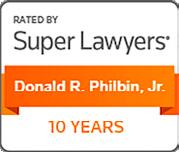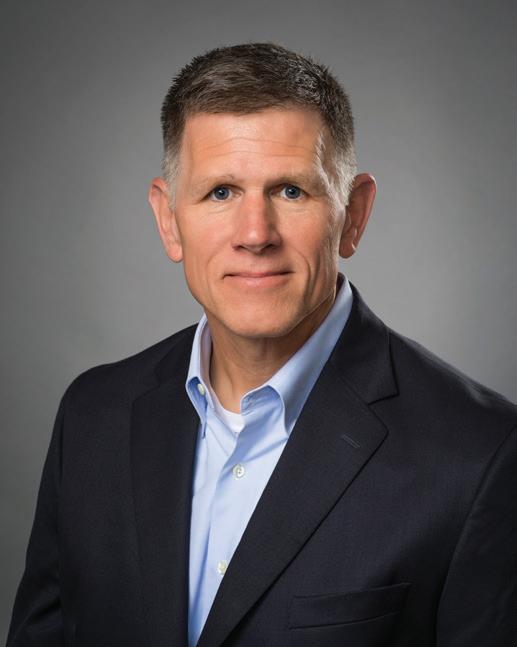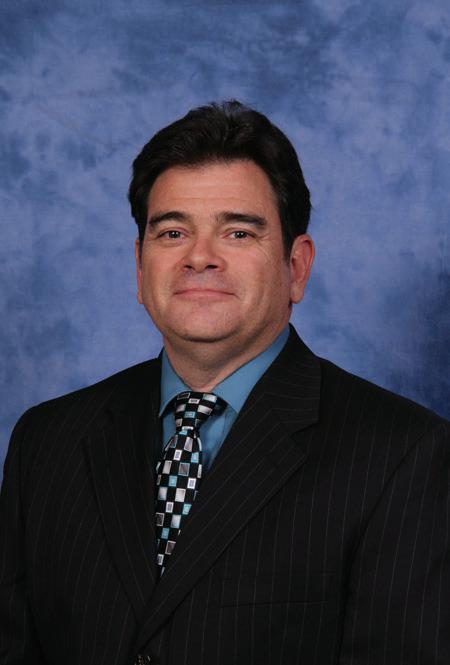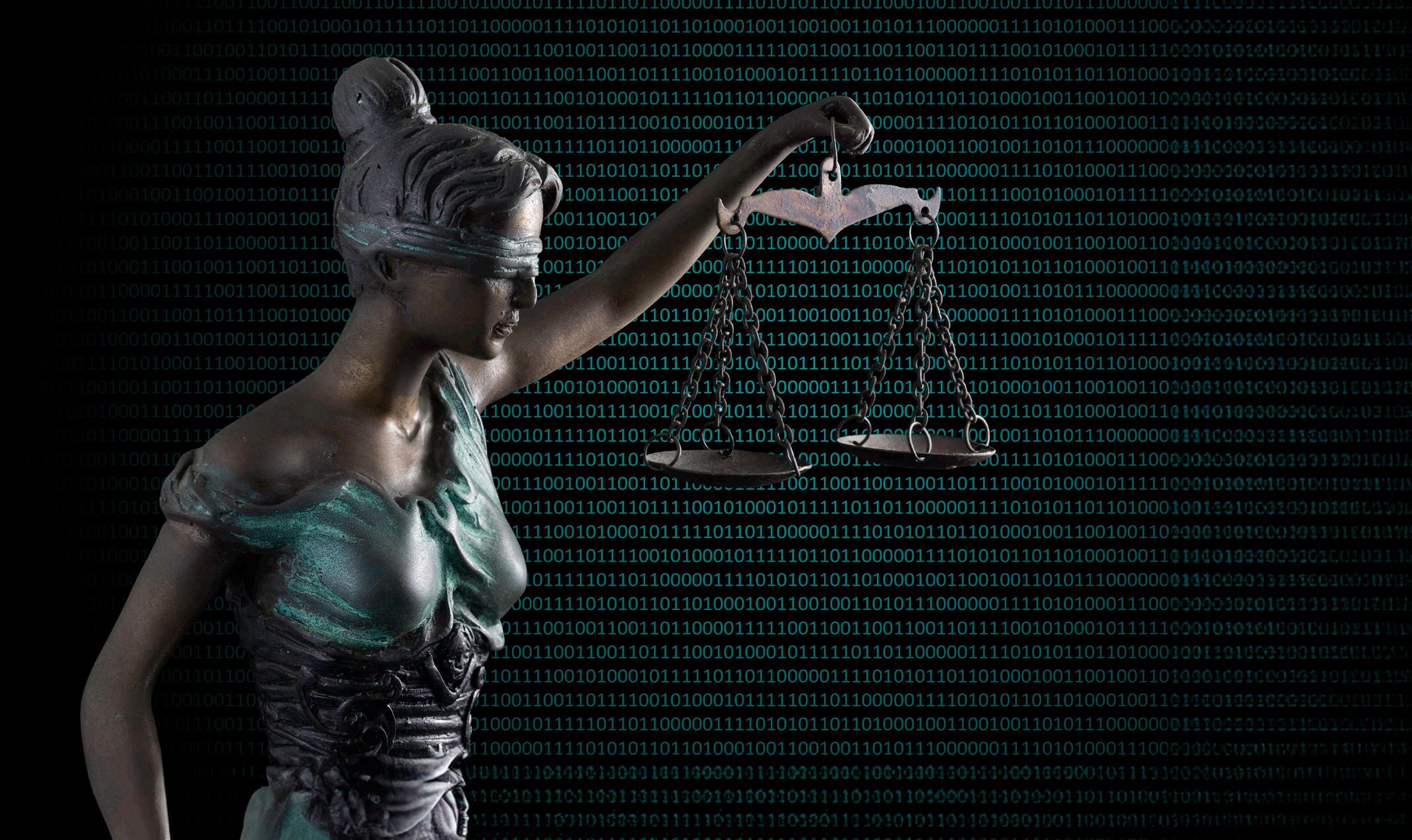
Command of the Field
Elena Villaseñor Sullivan

Artificial Intelligence and the Practice of Law in Texas
THE STORY OF JUNETEENTH
One Birthday Celebration That Means So Much More





Get started at lawpay.com/saba 866-730-4140 TOTAL: $1,500.00 New Case Reference **** **** **** 9995 *** Trust Payment IOLTA Deposit YOUR FIRM L OGO HERE PAY AT TO RNEY PO WE R ED BY 22% increase in cash flow with online payments Vetted and approved by all 50 state bars, 70+ local and specialty bars, the ABA, and the ALA 62% of bills sent online are paid in 24 hours Data based on an average of firm accounts receivables increases using online billing solutions. LawPay is a registered agent of Synovous Bank, Columbus, GA., Fifth Third Bank, N.A., Cincinnati, OH, and Wells Fargo Bank, N.A., Canadian Branch, Toronto, ON, Canada. Trusted by 50,000 law firms, LawPay is a simple, secure solution that allows you to easily accept credit and eCheck payments online, in person, or through your favorite practice management tools. Member Benefit Provider I love LawPay! I’m not sure why I waited so long to get it set up. – Law Firm in Ohio +

May–June 2024 | San Antonio Lawyer® 3 ON THE COVER 6 Command of the Field: The Precision Plays that Shape a Career By Ashley Dahlberg FEATURES 12 How My Birthday Became a Federal Holiday —The Story of Juneteenth By ileta! A. Sumner 16 A Historic Moment in the Legal Landscape By June Moynihan 18 Artificial Intelligence and the Practice of Law in Texas: Part I By The Honorable Xavier Rodriguez contents DEPARTMENTS 5 Feedback 26 Fourth Court Update By Justice Lori I. Valenzuela and Staff Attorney Benjamin Robertson 28 Federal Court Update By Soledad Valenciano, Melanie Fry, and Jeffrie Lewis 6
Elena Villaseñor Sullivan
Photo by Mewborne Photography



“His
“A
“One





San Antonio Lawyer® is published bimonthly. Copyright ©2024 San Antonio Bar Association. All rights reserved. Republication of San Antonio Lawyer content, in whole or in part, is prohibited without the express written permission of the San Antonio Bar Association. Please contact Editor in Chief Sara Murray regarding republication permission.
Views expressed in San Antonio Lawyer are those of the authors and do not necessarily reflect the views of the San Antonio Bar Association. Publication of an advertisement does not imply endorsement of any product or service. San Antonio Lawyer, the San Antonio Bar Association, and the Publisher reserve the right to edit all materials and assume no responsibility for accuracy, errors, or omissions. San Antonio Lawyer and the Publisher do not knowingly accept false or misleading advertisements or editorials, and do not assume any responsibility should such advertising or editorials appear.
Contributions to San Antonio Lawyer are welcome, but the right is reserved to select materials to be published. Please send all correspondence to info@sabar.org
Advertising Inquiries:
Monarch Media & Consulting, Inc.
Archives of San Antonio Lawyer are available at sabar.org. Send address changes to the San Antonio Bar Association.
Chellie Thompson 512.293.9277 chellie@monarchmediainc.com
EDITORS
BOARD OF EDITORS
Publication Design and Production: Monarch Media & Consulting, Inc.
Editor in Chief Sara Murray
Articles Editor Natalie Wilson
Departments Editor Leslie Sara Hyman
Editor in Chief Emerita Hon. Barbara Nellermoe
PUBLISHING PARTNER
Monarch Media & Consulting, Inc. 512.293.9277 | monarchmediainc.com
Design Direction Andrea Exter Design Sabrina Blackwell
Advertising Sales Chellie Thompson
Sara Murray, Chair
Pat H. Autry, Vice-Chair
Barry Beer
Amy E. Bitter
Ryan V. Cox
Paul Curl
Michael Curry
Shannon Greenan
Stephen H. Gordon
Leslie Sara Hyman
Rob Killen
Thomas Lillibridge
Rob Loree
Lauren Miller
Curt Moy
Harry Munsinger
Hon. Barbara Nellermoe
Steve Peirce
Donald R. Philbin
Clay Robison
Regina Stone-Harris
ileta! Sumner
Natalie Wilson
Ex Officio
Steve Chiscano
For information on advertising in San Antonio Lawyer: Call 512.293.9277
Chellie Thompson, Monarch Media & Consulting, Inc. chellie@monarchmediainc.com
President
Steve Chiscano
President-Elect
Patricia “Patty”
Rouse Vargas
Treasurer
Nick Guinn
Secretary
Jaime Vasquez
Immediate Past President
Donna McElroy
100 Dolorosa, Suite 500, San Antonio, Texas 78205 210.227.8822 | sabar.org
Directors (2023-2025)
Kacy Cigarroa
Melissa Morales Fletcher
Elizabeth “Liz” Provencio
Krishna Reddy
Directors (2022-2024)
Emma Cano
Charla Davies
Charles "Charlie" Deacon
Jorge Herrera
Executive Director
June Moynihan
4 San Antonio Lawyer® | sabar.org
of Corporate Counsel South/Central TX Bexar County Women’s Bar Association Christian Legal Society
Counsel of San Antonio Federal Bar Association—San Antonio Mexican-American Bar Association—San Antonio San Antonio Black Lawyers Association
Antonio Criminal Defense Lawyers Association
Antonio Trial Lawyers Association
Antonio Young Lawyers Association TEX-ABOTA, American Board of Trial Advocates—San Antonio William S. Sessions Inn of Court State Bar of Texas Directors Tom Crosley Lawrence Morales, II San Antonio Bar Foundation Chair Donna McElroy OFFICERS / DIRECTORS LOCAL BAR ASSOCIATIONS STATE BAR / SA BAR FOUNDATION
Association
Defense
San
San
San
grasp of the forces that drive a successful mediation is always spot on.”
real thinker and innovator”
of the smartest, most talented mediators
know”
of really innovative and clever ideas for helping people close”
hard to ensure the parties are aware of the risks” Mediation Booking: DonPhilbin.com Scheduling Assistance: (210) 212-7100 ® Official Publication of the San Antonio Bar Association
I
“Lots
“Works
Judge Fred Biery wins Award and welcomes Granddaughter
Since San Antonio Lawyer published “Judge Fred Biery: While Observing the Human Condition, He Also Discovered Himself,” by Steve Peirce (July-August 2023), Judge Biery’s outlook has only gotten rosier. Recently, he welcomed a beautiful new granddaughter, Raya (pictured here), and in a March 25, 2024, press release the Texas Bar Foundation announced:
Judge Fred Biery of San Antonio is the recipient of the 2024 Samuel Pessarra Outstanding Jurist Award from the Texas Bar Foundation. The award was established in 1995, when the Foundation received a bequest to the endowment from the estate of Mrs. Samuel Pessarra in honor of her late husband Samuel Pessarra for the purpose of funding the Outstanding Jurist Award. Samuel Pessarra, a native of Quintana, attended Baylor University and Baylor University School of Law. Mr. Pessarra was a member of the Brazoria County Bar Association, where he served as president, director and secretary. The Pessarra Outstanding Jurist Award honors an active Federal or State Judge (including retired judges or judges of senior status who continue to sit) who exhibits an exceptionally outstanding reputation for competency, efficiency and integrity.
Judge Biery began his judicial career when his college basketball coach had him spend a lot of time “on the bench.” Texas Lutheran University and SMU Law School were followed by five years of law practice with his father and uncle. Now he is in his 46th year of judicial service in Texas and United States courts.
For 20 years he grew copious amounts of vegetables through hard, but therapeutic, farm labor, as did his mother and ancestors, creating a deep appreciation for those who grow, harvest and prepare our food, then clean up after us.
He is an abject failure in female-male relationships, so decided to create his own family by adopting one daughter as a single man, only to be rescued by Marcia five years later, and then to adopt a second daughter. More failure followed . . . but through therapy and introspection, he has begun, though late in life, to know who and why he is and to follow the Buddha’s teaching: “Gracefully let go of things not meant for you.” The awards have been many, but the rewards are better: Granddaughters Harlow, Gema, and Raya who call him “Yonor.” And he calls them the Dessert of Life.
Judge Biery will be publicly recognized at the Texas Bar Foundation Annual Dinner held on June 21, 2024 at the Hilton Anatole in Dallas. SMU Dedman School of Law will receive a $1,000 scholarship donation in honor of Judge Biery.
Judge Biery graciously says that his receiving this award is largely attributable to Steve Peirce’s outstanding article in San Antonio Lawyer.
WE LOVE FEEDBACK!
Please send letters to the editor to Sara Murray, Editor in Chief, at smurray@langleybanack.com. The San Antonio Bar Association thanks our editors, board of editors, and contributing volunteer writers for bringing an unparalleled quality of editorial content to our valued readers.



Your IT Solutions Experts who can help with:
• HIPPA Compliance (TX HB300 applies)
• Cloud: storage, files, computers, servers
• Computers: repairs, upgrades, purchases, encryption
• Servers: setup, repairs, maintenance, purchases
• Email: domains, migration, backup, encryption
• Office 365: email, OneDrive, backup and Office software
• VoIP phones: includes Quality of Service (QoS) and backup internet
• Network: devices, setup, repairs, maintenance
• Call when you need us or customized service options available
• Remote and on-site support, antivirus programs, virus removal, maintenance www.pstus.com • 210-385-4287 support@pstus.com
Mention this ad and receive 20% off your first invoice.
May–June 2024 | San Antonio Lawyer® 5 feedback
Judge Biery and his new granddaughter, Raya.
Photo by Molly Biery

6 San Antonio Lawyer® | sabar.org
Photos by Mewborne Photography
The Precision Plays that Shape a Career COMMAND of the Field
By Ashley Dahlberg

“I feel like I can tackle big, big things because I can see the route.”
Seeing the Route
I am sitting with Elena Villaseñor Sullivan at a local coffee roaster, as pinball machines ding and flash around us. Elena’s two requests for our meeting were, above all else, very good coffee and not having to decide on a location. This reflects the type of decision-fatigue that overperformers will immediately recognize. I suspect that despite her having had a lifetime of serious titles (General Counsel, among them), Elena will enjoy the irreverence and novelty of this spot. Thankfully, I am right. She’s also not above laughing at herself. She arrives at our interview in the wide-leg, high-waisted jeans that are popular now. “My daughter said these jeans are in style,” she says, looking down in dismay at the same style of pants she may have worn in high school.
We start talking about football and my newfound understanding of route-running. (Football has found a new demographic in middle-aged women. You may have heard.) Route-running isn’t just for tight ends with famous girlfriends. “I feel like I can tackle big, big things because I can see the route.” Elena explains how careful planning, studying, and vision allowed her to see her throughline—from life as a partner at Jackson Walker and in-house counsel at USAA, to General Counsel at Massage Heights, and now, to deciding to head up her own bespoke compliance solutions business. She talks about how to accept the hugeness of a task, develop a process, and visualize the product. It’s the type of big-picture vision that separates a good leader from a great one.
Gumbo and Tamales
Elena grew up in San Antonio. She obtained a B.A. in International Studies from Boston College, and a J.D. from the University of Southern California’s Gould School of Law. She teasingly describes her background as “spicy.” On her father’s side, she descends from MexicanAmericans that settled in Eagle Pass. Her mother’s Houston clan is Cajun, from Louisiana. “We were eating gumbo for one holiday, and tamales for another.”
She is hovering around her twentieth year in the practice of law. For several years, Elena served as General Counsel for Massage Heights. Founded in 2004 in San Antonio, what started as a small, familyowned business has grown into a franchiser whose franchisees provide professional massage services across the country. Massage Heights offers membership and loyalty programs, showcasing self-care as an imperative, rather than a luxury.
Elena recently decided to put her business and compliance skills to use under her own banner and stand up a forthcoming compliance solutions company. Under that entity, she aims to offer a wide range of services to help companies do the right thing, mitigate risk, and comply with laws and contractual requirements so that they can focus on revenue and operational growth. With it, she plans to introduce a law firm component, providing general counsel services for businesses needing to outsource this function on a fractional basis. It’s a need she’s very familiar with, having seen franchisees—effectively, small businesses—express a desire for these types of services.
May–June 2024 | San Antonio Lawyer® 7


Reasonable Risks
When I marvel at her enthusiastic leap into such a different role, Elena is nonplussed. She tells me that it’s all well thought-out. She has spent decades being what she calls a reasonable risk-taker. Lately, she explains, she has been coaching her young daughter in taking these “reasonable risks.” (Gathering her courage to go zip-lining. Encouraging her daughter to ask a barista for sugar, unaccompanied.) This makes sense: in Elena’s world, big changes are made of a series of small, intentional, and reasonable changes in the direction of where you want to go.







Her explanations are crisp, and it’s clear that Elena has spent time thinking about how she presents in the world. I bring this up, as well as the discipline it must take to think before she speaks and acts. “It’s very intentional,” she agrees. She cites good work by USAA in fostering the further development of her executive leadership skills, as well as a personal coach whom she sought out to confront hard questions about her career trajectory, both of which ultimately led her to her new ventures.
Small Steps in the Direction You Want to Go


Prior to starting her businesses and serving as General Counsel, Elena spent five years at USAA, first as an Attorney for the Life Insurance line of business, and then as the Executive Director of Life Insurance, Annuities, and Health Insurance. Elena arrived at USAA after nearly a decade with Jackson Walker in San Antonio, where she practiced commercial litigation on a big stage, with its characteristic heavy demands. Her attorney position at USAA had her flexing those well-trained muscles—


8 San Antonio Lawyer® | sabar.org
www.raylaw.com I S A A C GUT I E RR E Z J AR R O D BU R N S M A TT R L A I R L A U R A W. H O L D E R G A BRI E L P Y T E L RPM Welcomes New Shareholders Laura W. Holder And Matt R. Lair And Is Proud To Announce The Promotion Of Its Newest Shareholders Isaac Gutierrez, Jarrod Burns and Gabriel Pytel In her new venture, she hopes that her clientele will see value in partnering with someone who is adept at finding those throughlines.
and how she learned to tame a beast of an assignment that seemingly no one wanted, but for which she essentially volunteered.
Soon after Elena arrived at USAA, the enterprise set about to document every law and regulation that touched its many lines of business. Some thought the idea was merely a passing thought and unlikely to come to fruition, while others found the task to be so laborintensive as to make it impractical. Regardless of how improbable or impossible it sounded, Elena dutifully followed the evolution of the project, which soon was no longer just an idea. She explains that she loves to take the ugly thing and make it pretty. To take command and build consensus. It was clear, though, that this task was perhaps the ugliest of ugly things, and it would have been easier to actively avoid it. Owing to her relative newness in the role and lack of in-depth experience with the regulations at issue, it would have been simple for her to demure. She agrees. But she saw the route, and longed to make this ugly thing pretty. In her new venture, she hopes that her clientele will see value in partnering with someone who is adept at finding those throughlines.
A (Rare) Chick with Command
A glance at Elena’s Clifton StrengthsFinder assessment will have you staring at Command, which might explain her deep well of determination in difficult circumstances. Command is rare, and it is the least-prevalent top strength among women (by Gallup’s own metrics). It is so unusual that when a StrengthsFinder coach-turned-podcaster caught wind of Elena’s top-ranking Command, she featured Elena on a podcast (cheekily styled: “Chicks with Command”). The show digs into how this statistical outlier strength manifests in women and offers some insightful tidbits on how to play to this strength.


May–June 2024 | San Antonio Lawyer® 9

I looked up “Command.” It might as well read as a description of an effective executive or general counsel:
Once a goal is set, a restlessness sets in until you have aligned others with you. You are not frightened by confrontation; rather, you know that confrontation is the first step toward resolution. Whereas others may avoid facing up to life’s unpleasantness, you feel compelled to present the facts or the truth, no matter how unpleasant it may be. You need things to be clear between people and challenge them to be clear-eyed and honest. You push them to take risks. And while some may resent this, labeling you opinionated, they often willingly hand you the reins.
LEADing the Way
We have been talking about serious things in a not-so-serious place. I hand her a cup of quarters, and we play pinball, to her delight. We keep talking. On her list of things that bring her joy, Elena cites being in the room with young lawyers or students when they realize they are good enough and smart enough. It’s not just a platitude; she’s been working to create opportunities for young lawyers to succeed for some time. She enjoys mentoring others, and speaking opportunities to help companies and organizations develop their teams with practical leadership skills. She spends her free time putting this into practice with her daughter’s Girl Scout troop, and the local women’s bar and its affinity organizations.
In January 2020, the Bexar County Women’s Bar’s LEAD Academy announced that Elena would serve as its next Director. Founded in 2015 by the BCWB’s Officers and Board of Directors— and originally led by Past-President Tiffanie Clausewitz—the LEAD


10 San Antonio Lawyer® | sabar.org
RSM US LLP is the U.S. member firm of RSM International, a global network of independent assurance, tax and consulting firms. Visit rsmus.com/aboutus for more information regarding RSM US LLP and RSM International. Followers come in second. Change waits for no one. Don’t sit back. Work with future-focused advisors who embrace technologydriven strategies, so you can take charge of change. rsmus.com
Academy was inspired by the need to help talented women excel in the practice of law. (Among its early accolades was the 2018 Star of Achievement Award presented by the State Bar of Texas.)
LEAD highlighted this first passing of the torch with much fanfare. Soon after, COVID set in. With no guidebook, Elena pivoted a program that has personal (and in-person) connections at its heart. As she had before COVID, she began each virtual meeting of LEAD’s Steering Committee with LEAD’s Mission Statement. There was a cause at stake, and it was dear to everyone involved. What may have been monotonous rang differently. She’d again been entrusted with making the (unexpectedly) ugly thing pretty: ensure that a newer organization to empower women attorneys lived to tell the tale of its two-year-long COVID class. Eight years after selecting its first class, LEAD Academy has not just survived, but indisputably thrived, and has become known state-wide as a model leadership academy for women attorneys.
Finding the Gift in Everything
In being so intentional in her career, Elena finds real joy in the little things, the unexpected. She tells me she loves dancing (the cumbia to hip-hop) and traveling. She is a former gymnast. While she insists that she hates to work out, her commitment to a pretty serious-sounding personal trainer (with a militant-sounding intonation) suggests otherwise. When Elena asks for her trainer’s opinion on the matter, her trainer tells her, indignantly: “You lie. You love it. You push yourself harder every day and you wouldn’t do that if you didn’t love it.” We know the same Elena, this trainer and me.
She gets a little choked up when talking about her daughter and the woman she hopes her daughter will become. She talks about her husband, whom she met in college, whom everyone calls “Sully.” (Few of her friends can recall his actual first name. It’s Chris.)
. . . The next day, Elena texts me a photo. She’s gotten some time to set down the heavy business of life for a bit. It is a photo of her daughter and husband, playing pinball. It brings her joy.

In being so intentional in her career, Elena finds real joy in the little things, the unexpected.
Ashley
Dahlberg is Senior Counsel at Norton Rose Fulbright where she practices commercial and securities litigation.
• Experienced, having conducted more than 25,000 mediations since 1989 with more than 850 years’ experience practicing law
• Committed to the mediation process and devoted to the ethical practice of law
• Covered by the AAM Member Insurance Group Policy, an arbitrator and mediator professional liability insurance
Areas of Practice
For more information, contact the local San Antonio Chapter. www.attorney-mediators.org/SanAntonioChapter Gary Javore - gary@jcjclaw.com
Michael J. Black
210.823.6814
mblack@burnsandblack.com
Paul Bowers
713.907.7680
paul@ptbfirm.com
John K. Boyce, III 210.736.2224
jkbiii@boyceadr.com
Leslie Byrd 210.229.3460
leslie.byrd@bracewell.com
Kevin Chaney 210.889.4479
kevin@kevinchaneylaw.com
Debbie Cotton 210.338.1034
info@cottonlawfirm.net
Michael Curry
512.474.5573
mcmediate@msn.com
Aric J. Garza
210.225.2961
aric@sabusinessattorney.com
Charles Hanor
210.829.2002
chanor@hanor.com
Gary Javore
210.733.6235
gary@jcjclaw.com
Alex Katzman
210.979.7300 alex@katzmanandkatzman.com
Daniel Kustoff 210.614.9444 dkustoff@salegal.com
J.K. Leonard 210.445.8817 jk@jkladr.com
Cheryl McMullan, Emeritus 210.824.8120 attyelder@aol.com
Dan Naranjo 210.710.4198 dan@naranjolaw.com
Patricia Oviatt 210.250.6013 poviatt@clarkhill.com
Jamie Patterson 210.828.2058 jamie@braychappell.com
Diego J. Peña 817.575.9854 diego@thepenalawgroup.com
Don Philbin 210.212.7100 don.philbin@adrtoolbox.com
Edward Pina 210.614.6400 epina@arielhouse.com
Richard L. Reed, Sr. 210.953.0172
rick.reed@steptoe-johnson.com
Wade Shelton
210.219.6300
wadebshelton@gmail.com
Thomas Smith 210.227.7565
smith@tjsmithlaw.com
Richard Sparr 210.828.6500 rsparr@sparrlaw.net
John Specia 210.734.7092 jspecia@macwlaw.com
Phylis Speedlin 210.405.4149
phylis@justicespeedlin.com
Lisa Tatum
210.249.2981 ltatum@tatum-law.com
William Towns
210.819.7453
bill.towns@townsadr.com
James Upton 361.884.0616 jupton@umhlaw.com
May–June 2024 | San Antonio Lawyer® 11
Appellate Bankruptcy Business/Commercial Civil Rights Condemnation Construction Consumer Education Employment & Labor Entertainment Family Farm & Ranch Health Care Insurance Intellectual Property International Medical Oil & Gas Personal Injury Professional Liability Real Estate Securities Taxation Title Insurance Wills, Trusts & Estates
Recommended by Judges and Attorneys

How My Birthday Became a Federal Holiday
—The Story of Juneteenth
In 1989, I learned that dancer Paula Abdul and I were born on the same exact day. Previously, in 1979, I found out that my favorite comic strip character, Garfield, had been created on my birthday; and each year, the strip shows him getting a ginormous birthday cake. However, since I was a little girl, I knew that I shared my birthday with the annual Juneteenth festivities that began in Texas, even though I was born and raised in San Francisco, California. My mother had told me that Juneteenth was the day in 1865 when the enslaved black people in Texas finally found out that Abraham Lincoln had freed them, by issuing the Emancipation Proclamation on January 1, 1863, two-and-ahalf years earlier.
What stumped me as a child, though, was: Why was everyone so happy? After all, people
By ileta! A. Sumner
of my race had remained enslaved in Texas far longer than those in other Confederate states. To me, it did not seem as much a cause for celebrating but for searching out the head of the Pony Express to chastise him for the delay in disseminating the information! Why had it taken so long for the enslaved people of Texas to get the news of their freedom? Furthermore, why had President Biden decided to consecrate that infamous day in African American history as a nationwide federal holiday 160 years later?
The name, Juneteenth, is a clever combination of the name of the month, June, and the day, the nineteenth, on which word ultimately reached Galveston, Texas, in 1865, that all enslaved people were freed by the Emancipation Proclamation of 1863. Yet, it was exactly three years before, in June
1862, that Abraham Lincoln had signed a bill abolishing slavery in the western territories. That bill had a limited effect, setting free all enslaved people brought by “disloyal masters” into Union-held territory. However, Lincoln had bigger plans. He wanted to free the entire enslaved population in the Confederate states. While constitutional restraints prohibited him from emancipation on this wider scale, because of his position as Commander-inChief of the United States, he could exert special power and get around the Constitution by doing away with slavery for military reasons. The Confederate Army was then using enslaved workers in support roles, such as maintaining operations at plantations and farms, while their masters were away fighting. Granting freedom to the enslaved workforce in Confederate states would cripple their war
12 San Antonio Lawyer® | sabar.org
effort. Thus, in order to be the most effective, timing of the emancipation was of the essence.
Fortunately—or unfortunately—the opportunity presented itself with the Battle of Antietam, September 17, 1862, the Civil War’s bloodiest battle, in which there had been over 23,000 casualties on each side. Confederate General Robert E. Lee’s first venture into Union territory had been a sheer disaster. He retreated the very next morning, and gave Lincoln just the opening for which he had been waiting. Five days later, Lincoln released a preliminary proclamation declaring his intention to free enslaved people on January 1, 1863, in all of the states that had left the Union, unless those states rejoined before that deadline. None did. Therefore, on that date, the Emancipation Proclamation freed approximately three-quarters of the enslaved people in the United States. It is important to note that the Emancipation Proclamation would not free all enslaved people in the United States: it left unaffected approximately 800,000 people held in bondage in Native American Territories; the four loyal states that permitted enslavement (Delaware, Kentucky, Maryland, and Missouri); thirteen parishes in Louisiana (including New Orleans); and forty-eight counties in eastern Virginia (including Norfolk and Portsmouth). Lonnie Bunch, founding director of the Smithsonian’s National Museum of African American History and Culture, explained that although not all enslaved people achieved freedom in 1863, the federal government finally was taking a firm stand, and saying that slavery was wrong and must end. At the time, Lincoln pronounced, “I never, in my life, felt more certain, that I was doing right, than I do in signing this paper. If my name goes down I history, it will be for this act, and my whole soul is in it.”
As word of the Emancipation Proclamation filtered through the Confederate states, the formerly enslaved population gradually became
aware of their freedom. They walked away from their plantations whenever Union soldiers were nearby and could offer extra protection from those who ignored the power of the Proclamation. Hence, enslavers began to “refugee their slaves,” by hiding them from Union soldiers.
Before the Proclamation, as many as 50,000 enslaved people were moved to Texas. Perhaps three times that number were relocated to Texas after the Proclamation. Still, the enslavers in Texas represented only 30% of the families in the state. Moreover, no more than 2% of those families enslaved twenty or more people. Nevertheless, Texas had become a “safe haven” for those seeking to perpetuate the system of chattel slavery, most likely because there was very limited Union presence here (since no major Civil War battles had been fought in Texas), and there were few opportunities for formerly enslaved individuals to seek assistance behind Union lines. Although the Civil War continued until General Lee’s surrender on April 9, 1965, the practice of slavery continued in Texas until Union Major General Gordon Granger arrived in Galveston, Texas, with 2,000 soldiers on June 19, 1865. Reading “General Order No. 3,” Granger informed the people of Galveston—and effectively all of the residents of Texas—that slavery would no longer be tolerated and that all enslaved persons in this state were, as of that moment, free.
General Order No. 3
The people of Texas are informed that in accordance with a Proclamation from the Executive of the United States, all slaves are free. This involves an absolute equality of rights and rights of property between former masters and slaves, and the connection heretofore existing between them becomes that between employer and hired laborer….


May–June 2024 | San Antonio Lawyer® 13
Let us help someone you know with their divorce. #CollaborativeDivorce #DivorceOnYourTerms 7500 Rialto Blvd, Bldg One, Suite 250, Austin, Texas 78735 whitten-law.com | info@whitten-law.com | (512) 478-1011 Adoption Grandparent or Non-parent Rights Collaborative Law High-Asset Divorce Modifications of Custody, Possession & Support Family Law Specialist Tim Whitten has practiced in family law since 1992. He has been certified as a Family Law Specialist by the Texas Board of Legal Specialization. *Kimberly A. Edgington kim@whitten-law.com Specialization
The name, Juneteenth, is a clever combination of the name of the month, June, and the day, the nineteenth, on which word ultimately reached Galveston, Texas, in 1865, that all enslaved people were freed by the Emancipation Proclamation of 1863.

Why had it taken so long to reach the border of Texas? Many reasons have been proffered, including the following: (1) a messenger was murdered on the way to Texas; (2) news was deliberately withheld by enslavers to maintain the free labor force on plantations; (3) federal troops actually waited for the harvest of one last cotton crop before going to Texas to enforce the Empancipation Proclamation: (4) poor communication of the time. The exact reason for the delay will never be known. Most likely, it was a combination of all of the above.
No matter the reason, though, it did nothing to quell the overwhelming feeling of happiness among the newly freed Texans. The majority of the freed black citizens opted out of the “opportunity” for employment with their former enslavers. Instead, they celebrated the fact that, after centuries of bondage, they were free . As the formerly enslaved Felix Haywood stated, “Everybody went wild! We all felt like heroes. We were FREE! ” (emphasis added.) The exhilaration was such that, thereafter, some former enslaved people and their descendants would travel to Galveston year after year in honor of what had become known as Juneteenth.
INCLUSIVE.
You wanted a Texas legal malpractice insurance company that insured all areas of practice, including those not often insured by other carriers. You wanted numerous limit and deductible options and a provider that’s flexible enough to serve one to 100 lawyer firms, yet focused on delivering incredible results through stellar service. We listened. Be Heard.
On June 17, 2021, President Joseph Biden signed into law a bill sponsored by Senator Edward Markey, D-MA, (along with sixty co-sponsors!), making the commemoration of Juneteenth a federal holiday. The day was already a holiday in nearly all fifty states. In 2016, to bring attention to the need to make Juneteenth a federal holiday, 96-year-old Opal Lee—a former teacher and activist, who was known as a “little old lady in tennis shoes”— walked from her home town of Fort Worth to Washington, D.C. Much like Stevie Wonder’s 1980 song “Happy Birthday” had spurred Coretta Scott King and other luminaries to push for recognition of Dr. Martin Luther King, Jr.’s birthday as a federal holiday four decades earlier, Opal’s efforts gained the attention of celebrities and politicians, enticing them to support the endeavor. Another probable impetus for recognizing the traditionally black holiday was the national dismay over the part race played in the murder of George Floyd in 2020. That horrible incident helped set the stage for Juneteenth to become the first federal holiday created since the creation of MLK Day in 1983. When the measure was brought for a vote, it faced no opposition in the United States Senate, and passed 415–14 in the United States House of Representatives.
or (512) 480-9074
Surprisingly, it was not uncommon for white people to prevent black people from gathering for such parties and picnics in public places. The celebrants would not be deterred, though, and devised some ingenious ideas to preserve their celebrations. For example, in 1872 black leaders in Houston collected $1,000 and purchased a parcel of land specifically for Juneteenth celebrations. Consequently, that place was named Emancipation Park, and retains that name to this day.
After the passage of the Thirteenth, Fourteenth, and Fifteenth Amendments to the United States Constitution, granting freedom to formerly enslaved citizens, equal rights under the Constitution, as well as a limited right to vote, Juneteenth celebrations were a time for black people to learn about their right to vote and how to exercise that right. According to the Texas State Historical Association, rodeos, horses, cookouts, parades, church services, musical performances, and other public events all became a part of recognizing Juneteenth, which has also been called Juneteenth Independence Day, Freedom Day, 2nd Independence Day, Emancipation Day, Jubilee Day, Liberation Day, and now, a National Holiday.
Gathered in a house that Vice President Kamala Harris reminded spectators had been built by an enslaved workforce—and only “footsteps away” from where President Lincoln had signed the Emancipation Proclamation— President Biden signed into law the bill making Juneteenth a federal holiday. Opal Lee, described as the “grandmother of the movement to make Juneteenth a federal holiday,” stood beside the President as he did so.
Decisively, Biden remarked that slavery was not only a “moral stain” on our country, but that the enslavement of black people was the nation’s “original sin.” Hence, “Juneteenth marks both the long, hard night of slavery and subjugation, and promise of a greater morning to come.”
So, now my birthday is a national holiday. Coincidentally, my older son’s birthday is also a national holiday—the Fourth of July. Ever since he was little, I told him that he was lucky to have a birthday on such a holiday for he would always get his birthday off with pay. Ironically, President Biden’s declaration of Juneteenth comes too late for me to enjoy such a privilege, as I have been medically retired since 2005 as a congestive heart failure survivor. Oh well. As my mother used to tell me, “Timing is everything in life.”
14 San Antonio Lawyer® | sabar.org
TLIE.ORG
2_4x4_9in_San Antonio_TLIE INCLUSIVE Ad_2024.indd 1 1/4/24 10:04 AM

ileta! A. Sumner, Esq. is a former President of the Bexar County Women’s Bar Association (2002) and the original General Counsel and creator of the legal department of the Battered Women’s and Children Shelter. She has been disabled since 2006. She can be reached at (210)421-2877 (cell), litig7rij@aol.com.
Selected Bibliography
“Abolition of slavery announced in Texas on ‘Juneteenth,’” HISTORY, https://www.history. com/this-day-in-history/abolition-of-slaveryannounced-in-texas-juneteenth.
“The Historical Legacy of Juneteenth,” Smithsonian – The National Museum of African American History and Culture, https://nmaahc.si.edu/explore/stories/historicallegacy-juneteenth
Sharon Pritt – Young, “Slavery Didn’t End on Juneteenth: What You Should Know About This Important Day,” npr, June 17, 2021, 6:00 a.m. ET, https://www.npr. org/2021/06/17/1007315228/juneteenth-whatis-origin-observation.
“Juneteenth: The Emancipation Proclamation – Freedom Realized and Delayed,” Prairie View A&M University, https://www.pvamu. edu/tiphc/research-projects/juneteenth-theemancipation-proclamation-freedom-realizedand-delayed/#:~:text=The%20news%20 was%20deliberately%20withheld,Texas%20 to%20enforce%20the%20proclamation.
“What the Emancipation Proclamation didn’t do,” npr, January 9, 2013, January 9, 2013, 12:00 p.m. ET, https://www. npr.org/2013/01/09/168957092/what-theemancipation-proclamation-didnt-do
Teresa Palomo Acosta, “Juneteenth,” Texas State Historical Association, Published 1952, Updated June 20, 2021, https://www. tshaonline.org/handbook/entries/juneteenth.
“The story behind Juneteenth and how it became a federal holiday,” NBC5 Dallas – Ft. Worth, Published June 16, 2023, Updated on June 18, 2023, 3:08 p.m., https://www.nbcdfw.com/ news/national-international/the-story-behindjuneteenth-and-how-it-became-a-federalholiday/3279526/
“Remarks by President Biden at Signing of the Juneteenth National Independence Day Act,” The White House, June 17, 2021, 3:51 p.m. EDT, https://www.whitehouse.gov/ briefing-room/speeches-remarks/2021/06/17/ remarks-by-president-biden-at-signing-of-thejuneteenth-national-independence-day-act/.
Safiya Charles, “How Stevie Wonder’s ‘Happy Birthday’ helped form MLK holiday,” The Detroit News, January 24, 2021, Published 5:27 p.m. CST, Updated 5:34 p.m. CST, https://www.detroitnews.com/in-depth/ entertainment/music/2021/01/24/how-steviewonders-happy-birthday-helped-create-kingholiday/6695494002/
Annie Karnie and Luke Broadwater, “Biden Signs Law Making Juneteenth a Federal Holiday,” The New York Times, June 17, 2021, Updated June 19, 2021, https://www.nytimes. com/2021/06/17/us/politics/juneteenthholiday-biden.html.
Alana Wise, “Juneteenth Is Now a Federal Holiday,” npr, Updated June 17, 2021, 4:28 p.m. ET, https://www.nbcdfw.com/news/ national-international/the-story-behindjuneteenth-and-how-it-became-a-federalholiday/3279526/.



May–June 2024 | San Antonio Lawyer® 15
personal injury ■ product liability commercial disputes business and contract disputes divorce ■ custody ■ support 210-343-1553 dlrLegalSolutions.com delariva@dlrlegalsolutions.com Century Heights 84 NE Loop 410, Ste. 277 San Antonio, TX 78216 dlR Solutions BUSINESS & LEGAL STRATEGIES Mediations for all civil and family law matters, including: Fluent in Spanish Gallant Computer Investigative Services, LLC David T. Gallant Licensed Texas Private Investigator (A15633) Retired Federal Agent (AFOSI) Court Certified Expert Witness (Federal/State/Military) (210) 271-2999 Titan Building 2700 NE Loop 410, Ste. 301, San Antonio, TX 78217 www.WhatsOnThePhone.com The Proof is in the Data™ Digital Forensics/Cell Tower Geolocation Mapping Cell Phone Records Analysis for MVAs

A Historic Moment in the Legal Landscape
It has been only 120 years since women were admitted to practice law in Texas and 70 years since they were permitted to serve on Texas juries. A significant milestone occurred in February of 2024, when San Antonio became the first Texas metropolitan city where the Civil District Court was comprised entirely of women, marking a historic moment in the legal landscape. Only 3% of law students and licensed attorneys were women in 1970. By 2014, women comprised 50% of law school students, and the percentage of female practitioners had grown steadily. By 2021, 37% of lawyers in the United States were women, which aligned with Bexar County’s attorney population.
The fourteen Civil District Court Judges not only bring a rich diversity of practice areas and professional experiences to San Antonio’s civil bench, but they are also deeply connected to the community they serve. They are not just legal professionals but also a reflection of the community. They understand its culture and history, making them more relatable to the people they serve.
They were all raised in South Central Texas, and all but two attended Texas law schools. The majority of the judges are fluent Spanish speakers. Collectively, they have over 324 years of experience practicing law, with nearly 100 years of bench experience. Most of the judges came
from private practice and focused on family law, criminal law, and complex business litigation, practicing in county, district, state appellate, and federal courts, including the 5th Circuit Court of Appeals. Several judges have public sector experience, ranging from work as a prosecutor, a legal aid staff attorney, and a director for elected officials drafting and passing Texas legislation. Each judge plays an active role in the District Civil Court through committee appointments that oversee civil court operations and liaise with various courts and county departments. Their involvement in these crucial aspects of the legal system underscores their commitment to the efficient functioning of the court.
16 San Antonio Lawyer® | sabar.org

BACK ROW
Judge Mary Lou Alvarez, 45th District Court; Judge Christine Vasquez-Hortick, 225th District Court; Judge Norma Gonzales, 131st District Court; Judge Tina Torres, 407th District Court; Judge Marisa Flores, 224th District Court; Judge Nicole Garza, 37th District Court
FRONT ROW
Judge Monique Diaz, 150th District Court; Judge Antonia “Toni” Arteaga, 57th District Court; Judge Nadine Nieto 285th District Court; Judge Cynthia Chapa, 288th District Court; Judge Laura Salinas, 166th District Court; Judge Angélica Jiménez, 408th District Court; Judge Rosie Alvarado, 438th District Court; Judge Marialyn Barnard, 73rd District Court

May–June 2024 | San Antonio Lawyer® 17
Judge Antonia “Toni” Arteaga takes one of her famous selfies.
Photo by Mewborne Photography
Artificial Intelligence and the Practice of Law in Texas: Part I
By The Honorable Xavier Rodriguez

Editor’s Note: This article is the first in a series addressing some of the myriad issues facing lawyers and courts arising from the greater accessibility and utility of artificial intelligence tools. Part I of this series provides a basic understanding of the relevant technology, including potential benefits and pitfalls about which lawyers should educate themselves.
This article was previously published as Artificial Intelligence (AI) and the Practice of Law in Texas, 63 STXLR 1 (Fall 2023) and is reprinted with permission.
From quill pens to mobile devices, how to practice law is constantly evolving. “Because of the vital role of lawyers in the legal process, each lawyer should strive to become and remain proficient and competent in the practice of law, including the benefits and risks associated with relevant technology.”1 The growth of artificial intelligence (AI) applications is just the latest incarnation of these developments. As lawyers have been required to adapt to these developments, the adaptable lawyer will need to determine when, and if, to incorporate AI into his or her practice. Such incorporation could help reduce the costs of legal services while increasing quality, expanding the availability of legal services, and allowing lawyers to get more done in less time. By automating repetitive and mundane processes, those lawyers particularly skilled in using AI to their advantage will be able to spend more time on case analysis and crafting legal arguments. AI is poised to reshape the legal profession, but AI will require courts, rules committees, and ethics bodies to consider some of the unique challenges that AI presents. It will require attorneys to evaluate whether to use such products, and the risks associated with any use. Attorneys using AI tools without checking on the accuracy of their output are responsible for the consequences of incorporating inaccurate information into their work product.2 This series will seek to provide attorneys with a baseline
understanding of AI technology and recommends areas where the State Bar, courts, rules committees, and attorneys may wish to undertake further study and potential rule changes.
Although AI tools are rapidly developing, no doubt there will be future governmental scrutiny and consumer input into this technology. In July 2023, the Federal Trade Commission began to investigate OpenAI, creator of ChatGPT,3 to determine whether the tool has harmed consumers through its collection of data and how personal data is used.4 The Securities and Exchange Commission has likewise begun to propose new regulatory requirements to address risks associated with the use of AI.5 ChatGPT’s co-founder recently testified before Congress, asking that Congress enact regulatory policy in these areas, partly to avoid navigating a patchwork of state laws.6 On October 30, 2023, President Biden signed an Executive Order titled “Safe, Secure, and Trustworthy Artificial Intelligence.” In part, this Executive Order (“EO”) requires AI developers who develop a model that may pose a risk to the national security, national economic security, or public health or safety to notify the federal government when training its model and share certain safety results. The EO also directs the United States Department of Commerce to develop standards and best practices for detecting AI-generated content and authenticating such content by watermarking the AI-generated content.7
Notwithstanding that AI tools have been in existence for some time now, albeit in a behind the scenes and low key way, and the governmental and private sector are considering how best to move forward with AI, some commentators question whether generative AI tools will ever gravitate to the necessary level of accuracy to justify their use.8 Further, as global entities and states in the United States consider whether to restrict the harvesting of certain data fed into AI tools for training purposes, it is uncertain how any such restrictions may affect the ability of AI tools to produce results with accuracy. If AI tools ingest generative AI results, some experts in the field question whether “data inbreeding”
18 San Antonio Lawyer® | sabar.org
may result and produce inaccurate results.9 Practitioners should monitor this rapidly changing landscape.
This series, however, does not undertake to make any recommendations on the larger policy issues surrounding AI. For example, the American Bar Association, in 2023, adopted Resolution 604, which sets forth guidelines requiring AI developers to ensure their products are subject to human oversight and are transparent. This series assumes that policymakers will, at various times, enact regulatory or statutory requirements in this area,10 and accordingly, this series will focus on issues practicing attorneys are likely to encounter and steps the State Bar of Texas and related entities should consider. Some AI issues are raised only briefly here. Some issues will require resolution from legislative bodies, courts, and governmental agencies.
AI implicates several intellectual property and other considerations that are important for lawyers to be aware of to advise clients. For example, to “what extent should . . . AI be considered a legal person and for what purposes?”11 Who (if anyone) owns a patent for a device designed by AI?12 Who is liable in tort for damages caused by an AI system?13 Will the ubiquitous use of AI facial recognition devices on public streets trigger a violation of the Fourth Amendment?14 Does the “scraping” of data from the internet and other sources violate any copyright works?15 Can an AI company be sued for defamation if its product manufactures a defamatory statement about a person or entity?16 This series merely references the likelihood of these developments and defers on these issues for consideration later by courts and governmental agencies.
An Introduction to AI
AI is ubiquitous and already in devices we use daily, including our smartphones and cars. “We routinely rely on AI-enriched applications, whether searching for a new restaurant, navigating traffic, selecting a movie, or getting customer service over the phone or online.”17 To remain proficient and competent in the practice of law, lawyers must have a basic understanding of the technology and terminology used in AI. AI “refer[s] to computer systems and applications that are capable of performing functions normally associated with human intelligence, such as abstracting, reasoning, problem solving, learning, etc.”18 “AI applications employ algorithmic models that receive and process large amounts of data and are trained to recognize patterns, thus enabling the applications to automate repetitive functions as well as make judgments and predictions.”19 “Machine learning is a subset of AI. It refers to humans training machines to learn based on data input . . . . [M]achine learning looks for patterns in data to draw conclusions. Once the machine learns to draw one correct conclusion, it can apply those conclusions to new data.”20
Natural language processing (NLP) is another subfield of AI . . . . NLP enables computers to read text or hear speech and then understand, interpret,
and manipulate that natural language . . . . Using NLP, computers are able to analyze large volumes of text data . . . to identify patterns and relationships . . . . This type of AI in law can be applied to help complete tasks like document analysis, e-discovery, contract review, and legal research.21
The models powering platforms used for generating text are called large language models, or LLMs. Much attention has recently been focused on ChatGPT, an AI chatbot created by OpenAI, powered by a LLM trained on a massive dataset to generate human-like responses. But ChatGPT and similar models are only one type of AI, commonly referred to as “generative AI.” 22
Generative AI is a specific subset of AI used to create new content based on training on existing data taken from massive data sources . . . in response to a user’s prompt, or to replicate a style used as input. The prompt and the new content may consist of text, images, audio, or video.23
Indeed, as one example, electronic research platforms such as Westlaw and LexisNexis are incorporating generative AI capabilities into their platforms.24 Some eDiscovery vendors have likewise begun to incorporate generative AI into their platforms, aiming to improve efficiencies in the discovery process.25 Still, the current state of developments has not been tested adequately, and there have been conspicuous examples of the technology failing to work properly.26 AI platforms have also been developed for legal writing,27 contract management, due diligence reviews, litigation forecasting, predictions of judicial rulings, and juror screening;28 and nonprofit
May–June 2024 | San Antonio Lawyer® 19
210-340-8351 I KFG24_CS_011 SA_Lawyer_APR_Ad_032224_4o9x4o9_mar_PR.indd 1 3/26/24 2:30 PM
“These new generative AI programs designed for the legal industry may improve accuracy to queries posed, quickly review thousands of pages of documents expediting due diligence tasks and early case assessment of litigation, and draft summaries or contract language. In sum, the potential exists to reduce legal costs. That said, lawyers will still have to verify output and provide “human judgment” to the issue at hand.”
legal organizations have been experimenting with how to implement bots to complete legal forms.29 Sullivan & Cromwell has recently announced that it has been investing in LAER AI to develop an AI Discovery Assistant. The intent is to bring an AI product to market that will accompany an attorney to depositions and trials—having already “digested” the case—to listen to the testimony and then suggest questions. One of the products already put in use, AI Discovery Assistant (AIDA) conducts document review.30
AI developments have taken place at a rapid pace not anticipated by the legal community.31 While these developments have been impressive, there is a need for education in the legal community to understand errors or “hallucinations” that may occur in the output of the LLMs powering these platforms. Attorneys and courts need to be aware of both the benefits and limitations that these AI platforms present.
Potential Limitations of Current Generative AI Platforms
Depending on the AI platform, several potential limitations should be considered, including, but not limited to, the following:
Was the data used to train the system skewed or complete? Is it representative of the target population on which the system will be used? If the AI system was trained with historical data that reflects systemic discrimination, how was this addressed? Were variables incorporated that are proxies for impermissible characteristics (e.g., zip code or arrest records, which may correlate with and therefore incorporate race)? What assumptions, norms, rules, or values were used to develop the system? Were the people who did the programming themselves sufficiently qualified, experienced

20 San Antonio Lawyer® | sabar.org
and/or diverse to ensure that there was not inadvertent bias that could impact the output of the system? Did the programmers give due consideration to the population that will be affected by the performance of the system?32
Most importantly, was the AI system specifically designed to be used by lawyers and the legal profession?
As noted by John Naughton, certain LLMs “crawled” or “harvested” an enormous amount of data on which the model could be trained.33 The LLM then “learned” from the dataset through neural networks.34 This allows the LLM to compose text “by making statistical predictions of what is the most likely word to occur next in the sentence that they are constructing.”35 But “[o]ne of the oldest principles in computing is GIGO – garbage in, garbage out. It applies in spades to LLMs, in that they are only as good as the data on which they have been trained.”36
The above questions require exploration because of the potential for bias in AI systems. “[M]achine-learning algorithms are trained using historical data, [thus,] they can serve to perpetuate the very biases they are often intended to prevent. Bias in [training] data can occur because the training data is not representative of a target population to which the AI system will later be applied.”37 This may or may not be as great a concern in the context of generative AI platforms like ChatGPT, but in the context of lawyers or clients using AI for hiring decisions or judges using AI platforms for bail decisions, bias in the underlying data set is an issue that requires scrutiny. Some researchers are focusing on ways to mitigate such biased models.38 The American Bar Association, among other groups,39 have suggested that lawyers might violate ABA Model Rule of Professional Conduct 8.4’s prohibition against engaging in discriminatory conduct by using biased AI platforms. It is uncertain whether mere use of AI tools that subsequently are shown to be flawed would violate Texas Disciplinary Rules of Professional Conduct 5.08 since the “conduct must be shown to have been ‘willful’ before the lawyer may be subjected to discipline.”40
Another concern with certain AI algorithms and their outputs may be the lack of proper testing for reliability for use in the legal profession.41 Attorneys should also be cautious about using an AI platform that was originally intended for a certain use and applying it for another use without adequate testing for validity (this is sometimes known as “function creep”; the widening of a technology or system beyond its original intended use).42

Our specialization allows us to offer legal professionals better coverage at rates substantially lower rates than most competitors. Call (866) 977-6720 or email sam@attorneysfirst.com for a fast & friendly quote. Our Promise to you! We won’t waste your time preparing a quote if we can’t SAVE you significantly.

May–June 2024 | San Antonio Lawyer® 21
Save 20% to 40% on your E&O/Professional Liability Insurance with
ATTORNEYS FIRST INSURANCE


Experience premium, modern banking customized for you.
Broadway’s Private Banking team provides premium, modern banking and financial services curated specifically for your personal and business needs.
For more than 83 years, Broadway Bank has been an integral part of Texas, evolving into one of the largest independently owned banks in the state with more than $5 billion in assets and $3 billion in Wealth Management assets.
Finally, current pricing may pose a temporary obstacle to widespread adoption. As of August 2023, pricing for the largest GPT-4 model is $.06 for every 1,000 tokens (about 750 words) input. And $.12 for every thousand tokens output.43 If entire case files were inputted, costs could be significant. As with all technology, as the technology improves and competition grows, these costs are likely to decline.
It should be noted, however, that many concerns over AI have been based on earlier versions. “When OpenAI launched its first large language model, known as GPT-1, in 2018, it had 117 million parameters—a measure of the system’s scale and complexity. Five years later, the company’s fourthgeneration model, GPT-4, is thought to have over a trillion.”44 As these tools mature, their accuracy will likely greatly improve.
Potential Opportunities that AI May Offer the Legal Industry
Many law firms share the same challenges—rising overhead costs (particularly wages), increasingly complex cases, and the historical reliance on manual processes that are inefficient, reduce productivity, and result in increased costs largely absorbed by clients. AI tools offer the prospect to automate and possibly improve several operations, including legal research, document review, and client communication. The use of AI could also free lawyers to work on issues of strategic importance—both improving the experience of practicing law while at the same time providing more value to the client. In addition, AI’s ability to analyze large amounts of data can reduce the risk of human error and increase confidence in the accuracy of the results produced.
But large language models, such as ChatGPT, have recently exposed a weakness—hallucinations or errors. Although why errors occur is not fully understood, generally the LLMs hallucinate because the underlying language model compresses the language it is trained on, and reduces/conflates concepts that often should be kept separate. Ultimately, the LLM is a probabilistic model and generates text, as opposed to true or false answers.45 New models, however, are being developed that are being built on archives of legal documents to improve the accuracy of an answer. These new generative AI programs designed for the legal industry may improve accuracy to queries posed, quickly review thousands of pages of documents expediting due diligence tasks and early case assessment
22 San Antonio Lawyer® | sabar.org
Speak with a Private Banker today. broadway.bank/private • (210) 681-0747 Private Banking at Broadway Bank is subject to eligibility qualifications. Eligibility criteria may include financial, professional, and/or account verification and evaluation. Subject to change without notice. Member FDIC. Rev. 01/24 / #1284272851
of litigation, and draft summaries or contract language. In sum, the potential exists to reduce legal costs. That said, lawyers will still have to verify output and provide “human judgment” to the issue at hand.
It is expected that AI tools will be able to: (1) facilitate ADR by providing early insights into disputes; (2) predict case outcomes; (3) engage in scenario planning and predict negative outcomes; (4) assist with case management and calendaring/deadlines; (5) conduct contract review and due diligence tasks; (6) automate the creation of forms and other legal documents; (7) assist with discovery review and production; (8) assist with the ability to detect personal identifying information, confidential health information, or proprietary or trade secret information; (9) enhance marketing and social media presence; (10) translate data into another language; (11) automate billing; and (12) expedite and lower the cost of legal research and regulatory compliance. In addition, counsel may be able to use AI tools to engage in strategic planning with their clients by running analyses of the client’s financial statements and other data.46 That said, many other non-AI tools can assist with these tasks. Ultimately, attorneys and clients will need to evaluate whether the benefits of this new technology outweigh any costs or concerns.
The next installment of this series will begin to explore more specific concerns about the use of AI in the legal profession and specific contexts in which it may be relevant.

Judge Xavier Rodriguez was appointed to the United States District Court, Western District of Texas in 2003. He is the editor of Essentials of E-Discovery (TexasBarBooks 2d ed. 2021), as well as a member of The Sedona Conference Judicial Advisory Board, the Georgetown Advanced E-Discovery Institute Advisory Board, and the EDRM Global Advisory Council. He also serves as the Distinguished Visiting Jurist-in-Residence and adjunct professor of law at the St. Mary’s University School of Law.





May–June 2024 | San Antonio Lawyer® 23 MEDIATION SERVICES PROMPT, AFFORDABLE DISPUTE RESOLUTION ™ CIVIL & FAMILY MEDIATION PARENTING COORDINATION PARENTING FACILITATION • 20+ Years’ Business Law & Int’l Business Experience 20 Years’ Manufacturing & Construction Experience • 10 Years’ Family Law & Real Estate Experience kevinchaneylaw.com 210-889-4479 Association of Family and Conciliation Courts Association of Attorney Mediators Texas Association of Mediators
Office@ProntoProcess.com 210-226-7192 www.ProntoProcess.com Nationwide Process Serving Skip Tracing Court Filings Online Repository Managing Too Much? LeT us heLp. You fiLe iT and we do The resT!
1Tex. Disciplinary Rules Prof’l Conduct R.1.01 cmt. 8, reprinted in Tex. Gov’t Code Ann., tit. 2, subtit. G, app. A (Tex. State Bar R. art. X, § 9).
2See, e.g., Michael Loy, Comment, Legal Liability for Artificially Intelligent “Robot Lawyers”, 26 Lewis & Clark L. Rev. 951, 957-58 (2022)(discussing how attorneys have a duty to accept ultimate responsibility for the use of robot lawyers as software tools).
3This series makes several references to ChatGPT because it was one of the first developers to garner significant publicity; but there are several other text generators in this space (E.g., Claude 2, Google Bard AI, Bing AI Chat, Perplexity AI, and others), as well as many other AI tools now on the market. In addition to these commercial products, some law firms (E.g., Dentons) have now launched their own versions of an LLM. This series should not be interpreted as making any type of endorsement or non-endorsement of any product.
4Cat Zakrzewski, FTC Investigates OpenAI Over Data Lead and ChatGPT’s Inaccuracy, Wash. Post ( July 12, 2023, 7:26 PM), https://www.washingtonpost.com/ technology/2023/07/13/ftc-openai-chatgpt-sam-altman-lina-khan [https://perma.cc/F6BS-BP4F] (discussing how analysts have called OpenAI’s ChatGPT the fastest-growing consumer app in history).
5Press Release, U.S. Sec. Exch. Comm’n, SEC Proposes New Requirements to Address Risks to Investors From Conflicts of Interest Associated With the Use of Predictive Data Analytics by Broker-Dealers and Investment Advisers (July 26, 2023) (on file with the U.S. Sec. Exch. Comm’n), https://www.sec.gov/news/press-release/2023-140 [https://perma.cc/B6TL-UBQ7].
6Cecilia Kang & Cade Metz, F.T.C. Opens Investigation into ChatGPT Maker Over Technology’s Potential Harms, N.Y. Times (July 13, 2023), https://www.nytimes.

com/2023/07/13/technology/chatgpt-investigation-ftcopenai.html [https://perma.cc/2J77-NQ42].
7See https://www.whitehouse.gov/briefing-room/statements-releases/2023/10/30/fact-sheet-president-bidenissues-executive-order-on-safe-secure-and-trustworthyartificial-intelligence/
8See Ted Chiang, ChatGPT is a Blurry Jpeg of the Web, The New Yorker (Feb. 9, 2023), https://www.newyorker.com/tech/annals-of-technology/chatgpt-is-ablurry-jpeg-of-the-web [https://perma.cc/8GET-LZPY] (analogizing what generative AI does to compressing data as akin to what happens when a file is compressed to a jpeg and loses certain attributes – known as lossy compression).
9See Maggie Harrison, When AI is Trained on AI-Generated Data, Strange Things Start to Happen, Futurism (Aug. 2, 2023), https://futurism.com/ai-trained-aigenerated-data-interview?ref=refind [https://perma. cc/4RYN-989T] (interview with Richard G. Baraniuk, Sina Alemohammad & Josue Casco-Rodriguez).
10See, e.g., White House Off. of Sci. & Tech. Pol’y, Blueprint for an AI Bill of Rights: Making Automated Systems Work for the American People (2022), https://www.whitehouse.gov/wp-content/ uploads/2022/10/Blueprint-for-an-AI-Bill-of-Rights. pdf[https://perma.cc/2SRE-VBWS] [hereinafter Blueprint for an AI Bill of Rights]; U.S. Dep’t of Com., Nat’l Inst. of Standards & Tech., NIST AI 100-1, Artificial Intelligence Risk Management Framework (AI RMF 1.0) (2023), https://nvlpubs.nist.gov/ nistpubs/ai/NIST.AI.100-1.pdf [https://perma.cc/ KJ4G-7QQQ] (a set of standards for the design, development, use, and evaluation of AI products); Consumer Fin. Prot. Bureau, Consumer Financial Protection Circular 2022-03:Adverse Action Notification Requirements in Connection with Credit Decisions Based on Complex Algorithms, (May 26, 2022),https://files.consumerfinance.
gov/f/documents/cfpb_2022-03_circular_2022-05.pdf [https://perma.cc/2QYX-345Z] (the Consumer Financial Protection Bureau (CFPB) May 2022 guidance to financial institutions regarding algorithmic credit decisions and creditor reporting obligations); H. Mark Lyon et al., Artificial Intelligence and Automated Systems 2022 Legal Review, Gibson Dunn (Jan. 25, 2023), https:// www.gibsondunn.com/artificial-intelligence-and-automated-systems-2022-legal-review/ [https://perma. cc/5XCZ-23AD] (summarizing U.S. state and federal legislative, regulatory and policy developments). 11Fredric I. Lederer, Here There Be Dragons: The Likely Interaction of Judges with the Artificial Intelligence Ecosystem, 59 The Judges’ J. 12, 13 (2020); see also Copyright Registration Guidance: Works Containing Material Generated by Artificial Intelligence, 88 Fed. Reg. 16190 (Mar. 16, 2023) (to be codified at 37 C.F.R. pt. 202), https://www.govinfo.gov/content/pkg/FR-2023-03-16/ pdf/2023-05321.pdf [https://perma.cc/QAS4-9QU7] (the U.S. Copyright office has taken the position that AI-generated works cannot be copyrighted); Franklin Graves, DC Court Says No Copyright Registration for Works Created by Generative AI, IPWatchdog (Aug. 19, 2023, 3:34 PM), https://ipwatchdog.com/2023/08/19/ copyright-registration-works-created-by-generative-ai/ id=165444/# [https://perma.cc/N924-XT6K] (J. Beryl Howell agreed, stating in an August 2023 opinion that “[h]uman authorship is a bedrock requirement of copyright”).
12See generally in re Application of Application No. 16/524,350, No. 50-567-3-01-US, 2020 WL 1970052 (Dec. Comm’r Pat. Apr. 22, 2020); Thaler v. Vidal, 43 F.4th 1207 (Fed. Cir. 2022); Thaler v. Perlmutter, No. 1:22-cv-01564, 2023 WL 5333236 (D.D.C. Aug. 18, 2023) (mem. op.) (AI-generated works cannot be copyrighted); Artificial Intelligence, U.S. Pat. & Trademark Off. https://www.uspto.gov/initiatives/artificial-intelligence [https://perma.cc/2DUW-KUV4] (Mar. 22, 2023, 12:41 PM).
13See Lederer, supra note 10, at 13.
14Id. at 14.
15Winston Cho, Scraping or Stealing? A Legal Reckoning Over AI Looms, The Hollywood Rep. (Aug. 22, 2023, 12:18 PM), https://www.hollywoodreporter.com/ business/business-news/ai-scraping-stealing-copyrightlaw-1235571501/ [https://perma.cc/8WTB-LPGW] (AI companies contend that their practice of inputting data from the internet and other sources constitutes “fair use” under copyright law).
16Ryan Tracy & Isaac Yu, Some of the Thorniest Questions About AI Will be Answered in Court, Wall St. J. (Aug. 23, 2023, 9:00 AM), https://www.wsj.com/tech/ ai/some-of-the-thorniest-questions-about-ai-will-beanswered-in-court-e7fd444b [https://perma.cc/D3TY5EAR] (also mentioning issues such as can AI be used by healthcare insurance carriers to review claims and whether AI tools violate privacy laws).
17Nat’l Sec. Comm’n on A.I. 33 (2021), https://www. nscai.gov/wp-content/uploads/2021/03/Full-ReportDigital-1.pdf [https://perma.cc/63ZP-9DYN].
18Cynthia Cwik, Paul w. Grimm, Maura R. Grossman & Toby Walsh, Am. Ass’n for the Advancement of Sci., Artificial Intelligence and the Courts: Materials for Judges 6 n.2 (2022), https://www.nvd. uscourts.gov/wp-content/uploads/2023/04/AI-andTrustworthiness-NIST.pdf [https://perma.cc/T7CPR7V8].

19Leslie F. Spasser, Denver K. Ellison & Brennan Carmody, Artificial Intelligence Law and Policy Roundup, LAW.COM: Legaltech News (Mar. 1, 2023, 9:02 AM), https://www.law.com/legaltechnews/2023/03/01/ artificial-intelligence-law-and-policy-roundup/ [https://
24 San Antonio Lawyer® | sabar.org Steven Bankler, CPA, Ltd. We Solve Problems 210.691.3133 bankler.com Steven Bankler CPA, PFS, Cr.FA, CFF, CGMA •Exit Planning and Succession Planning •Tax Planning and IRS Representation •Forensic Accounting •Expert Witness (business damages, bankruptcy, business divorce, etc.)
ENDNOTES
perma.cc/2KTC-4XW4].
20AI for Lawyers: What is AI and How Can Law Firms Use It?, Clio, https://www.clio.com/resources/ai-forlawyers/lawyer-ai/ [https://perma.cc/8PA6-LT2T].
21Id.
22For those who benefit from a visual explanation of how ChatGPT and similar AI tools work, see https://www. theguardian.com/technology/ng-interactive/2023/ nov/01/how-ai-chatbots-like-chatgpt-or-bard-workvisual-explainer?CMP=Share_iOSApp_Other
23Maura R. Grossman, Paul Grimm, Daniel Brown & Molly Xu, The GPT Judge: Justice in a Generative AI World, 23 Duke Law & Tech. Rev. (forthcoming Oct. 2023) (manuscript at 8) (footnote omitted), https:// papers.ssrn.com/sol3/papers.cfm?abstract_id=4460184
24See Westlaw Precision; see also LexisNexis.
25It may be possible within a short timeframe for eDiscovery platforms to use generative AI to help locate potential sources of relevant information, and assist with the preservation, collection, and review of relevant data. See From Bleeding Edge to Leading Edge: GAI and Reciprocal Intelligence in eDiscovery, Complex Discovery (Aug. 20, 2023), https://complexdiscovery.com/ from-bleeding-edge-to-leading-edge-gai-and-reciprocalintelligence-in-ediscovery [https://perma.cc/9W9TV8W4]. Some eDiscovery platforms are suggesting their product can do so. See, e.g., https://www.merlin. tech/?utm_medium=email&_hsmi=280828406&_ hsenc=p2ANqtz-8CFB2bMxRXlwZ2-6gv1-luFC31xs_ya5ObI8yl4BpS-HlJY-grZkHg2zlfrheueiM6HlJ8T2TA2PVy25CKwiraIFPWGqtAHl-0xpYJntP_ KnyEwvE&utm_content=280828406&utm_ source=hs_email. But cost savings in these areas may need to be offset by the need for additional quality control and validation of results. See Even FLOE? A Strategic Framework for Considering AI in eDiscovery, Complex Discovery (Aug. 10, 2023) https://complexdiscovery. com/even-floe-a-strategic-framework-for-consideringai-in-ediscovery [https://perma.cc/GSY9-8RGZ].
26In perhaps the most notable example, a ChatGPT-generated legal brief included six fictitious cases. The lawyers who submitted the brief were sanctioned as a result. See Sara Merken, New York Lawyers Sanctioned for Using Fake ChatGPT Cases in Legal Brief, Reuters (June 26, 2023, 3:28 AM), https://www.reuters.com/legal/newyork-lawyers-sanctioned-using-fake-chatgpt-cases-legalbrief-2023-06-22/# [https://perma.cc/4ML9-L4RV].
27For example, Clearbrief claims to strengthen legal writing in Word by using AI to examine discovery, exhibits, pleadings, and other documents and displaying the citations to the source documents. It also claims to create a hyperlinked timeline. See Bob Ambrogi, New AI Features in Clearbrief Create Hyperlinked Timelines and Allow Users To Query Their Documents, LawSites (Aug. 15, 2023), https://www.lawnext.com/2023/08/exclusive-new-ai-features-in-clearbrief-create-hyperlinkedtimelines-and-allow-users-to-query-their-documents. html [https://perma.cc/G3SL-LYPZ].
28See Voltaire Uses AI and Big Data to Help Pick Your Jury, Artificial Law. (Apr. 26, 2017), https://www. artificiallawyer.com/2017/04/26/voltaire-uses-aiand-big-data-to-help-pick-your-jury/ [https://perma. cc/3T92-DKB2]. Voltaire is an AI tool designed to provide insight into jurors by reviewing their social media activity, public records, and other online presence.
29See Paul W. Grimm, Maura R. Grossman & Gordon V. Cormack, Artificial Intelligence as Evidence, 19 Nw. J. Tech. & Intell. Prop. 9, 34-35 (2021). This article is also very useful for a more detailed discussion of what is AI and its historical development.
30See Patrick Smith, Sullivan & Cromwell’s Investments in AI Lead to Discovery, Deposition ‘Assistants’, ’ The Am.
Law. (Aug. 21, 2023, 5:00 AM) https://www.law.com/ americanlawyer/2023/08/21/sullivan-cromwell-investments-in-ai-lead-to-discovery-deposition-assistants [https://perma.cc/8GQ3-JFX6].
31It has been widely reported that ChatGPT 3.5, which was introduced in March 2022, scored at about the bottom 10th percentile on a simulated bar exam, but GPT4, introduced in March 2023, scored at the 90th percentile on the same exam. See Barry Dynkin & Benjamin Dynkin, AI Hallucinations in the Courtroom: A Wake-Up Call for the Legal Profession, N.Y. L. J. (June 14, 2023, 10:00 AM), https://www.law.com/ newyorklawjournal/2023/06/14/ai-hallucinations-inthe-courtroom-a-wake-up-call-for-the-legal-profession/ [https://perma.cc/NEE3-CRK5].
32Cwik et al., supra note 17, at 20.
33John Naughton, The World Has a Big Appetite for AI –But We Really Need to Know the Ingredients, Observer (Aug. 21, 2023 11:00 AM), https://www.theguardian. com/commentisfree/2023/aug/19/the-world-has-a-bigappetite-for-ai-but-we-really-need-to-know-the-ingredients [https://perma.cc/LT8Z-VS2G].
34See also Timothy B. Lee & Sean Trott, A Jargon-Free Explanation of How AI Large Language Models Work, Ars Technica (July 31, 2023, 6:00 AM), https://arstechnica.com/science/2023/07/a-jargon-free-explanationof-how-ai-large-language-models-work/ [https://perma. cc/Q8XH-5M38].
35Naughton, supra note 31.
36Id.
37See Grimm et al., supra note 27, at 42-47.
38See Hammaad Adam, Aparna Balagopalan, Emily Alsentzer, Fontini Christia & Marzyeh Ghassemi, Mitigating the Impact of Biased Artificial Intelligence in Emergency Decision-Making, Commc’ns Med. (Nov. 21, 2022), https://www.nature.com/articles/s43856-02200214-4 [https://perma.cc/8229-Y8T7].
39See Julia Brickell, Jeanna Matthews, Denia Psarrou & Shelley Podolny, AI, Pursuit of Justice & Questions Lawyers Should Ask, Bloomberg L. (Apr. 2022), https://www.bloomberglaw.com/external/document/ X3T91GR8000000/tech-telecom-professional-perspec-
tive-ai-pursuit-of-justice-ques [https://perma.cc/XZZ5WQ3A].
40Tex. Disciplinary Rules Prof’l Conduct R. 5.08, cmt. 2.
41See Grimm et al., supra note 27, at 48-51.
42See id at 51.
43Dan Diette, What Will Generative AI and LLMs Mean for eDiscovery?, Complete Discovery Source (CDS) (Aug. 10, 2023), https://cdslegal.com/insights/ai/ what-will-generative-ai-and-llms-mean-for-ediscovery/ [https://perma.cc/HA6B-VYYX].
44Ian Bremmer & Mustafa Suleyman, The AI Paradox, Can States Learn to Govern Artificial Intelligence––Before It’s Too Late?, Foreign Affairs (Aug. 16, 2023), https:// www.foreignaffairs.com/world/artificial-intelligencepower-paradox [https://perma.cc/Q5MD-AE8K] (also noting that “AI could be used to generate and spread toxic misinformation, eroding social trust and democracy; to surveil, manipulate, and subdue citizens, undermining individual and collective freedom; or to create powerful digital or physical weapons that threaten human lives. AI could also destroy millions of jobs, worsening existing inequalities and creating new ones; entrench discriminatory patterns and distort decision-making by amplifying information feedback loops; or spark unintended and uncontrollable military escalations that lead to war . . .. AGI could become self-directed, self-replicating, and self-improving beyond human control.”).
45Code.org, How Chatbots and Large Language Models Work, YouTube (Aug. 15, 2023), https://www.youtube.com/watch?v=X-AWdfSFCHQ [https://perma.cc/ ND25-8T6F] (a video on how LLMs work and further explaining hallucinations).
46Thomson Reuters, Client Collaboration: The Evolution in Law Firms 6 (2023), https://legal.thomsonreuters.com/content/dam/ewp-m/documents/legal/ en/pdf/white-papers/client-collaboration-white-paperthe-evolution-in-law-firms-us-tr3462238.pdf [https:// perma.cc/5RMT-BEKJ]

May–June 2024 | San Antonio Lawyer® 25
Recent Procedural Rule Changes Affecting Fourth Court Practices
By Justice Lori I. Valenzuela and Staff Attorney Benjamin Robertson
Ahost of laws passed in last year’s legislative session resulted in the Supreme Court of Texas drafting or amending rules affecting practice and procedure in the Fourth Court. We accordingly discuss some of the major changes affecting practitioners before the court.
Agreed and Permissive Interlocutory Appeals
In 2011, the Legislature originally enacted permissive interlocutory appeals, modeled after the federal system, “for the efficient resolution of certain civil matters in certain Texas courts” and to “make the civil justice system more accessible, more efficient, and less costly to all Texans while reducing the overall costs of the civil justice system to all taxpayers.”1 However, courts of appeals perhaps exercised their broad discretion2 to deny permissive appeals more frequently than some legislators (and members of the supreme court3) would have liked. In response,4 the Legislature passed Tex. Civ. Prac. & Rem. Code § 51.014(g), requiring a court of appeals that does not accept a permissive interlocutory appeal to “state in its decision the specific reason for finding that” a such appeal “is not warranted.”5 Further, Tex. Civ. Prac. & Rem. Code § 51.014(h) authorizes the supreme court to review de novo courts of appeals’ decisions denying permissive interlocutory review and—if the supreme court determines the requirements for such review are satisfied—direct the court of appeals to accept the appeal.6
On November 17, 2023, the supreme court issued final approval for repealing Tex. R. App. P. 28.27 and amending Tex. R. App. P. 28.3 to implement Tex. Civ. Prac. & Rem. Code §§ 51.014(g) and (h). Tex. R. App. P. 28.3 governs the procedure for all permissive appeals filed after September 1, 2023. Parties are now required to attach the following items to their petition for permissive interlocutory appeal: (1) “a copy of the order from which the appeal is sought”; (2) “a copy of every file-marked document that is material to the order from which appeal is sought and that was filed in the trial court”; and (3) “a properly authenticated transcript of any relevant testimony from the underlying proceeding, including any relevant exhibits
offered in evidence relating to the order from which appeal is sought; a statement that the transcript has been ordered and will be filed when it is received; or a statement that no evidence was adduced in connection with such order.”8 Consistent with Tex. Civ. Prac. & Rem. Code § 51.014(g), Tex. R. App. P. 28.3 requires a court of appeals to “explain in [its] decision the specific reasons for finding that” a permissive interlocutory “appeal is not warranted.”9
While the statutory mandate to specify reasons for denial is new, members of the Fourth Court have endeavored to adhere to the prior best practice by issuing explanatory decisions,10 and given the small number of petitions seeking permissive interlocutory review filed in the Fourth Court, we do not expect the new rule to materially affect court operations. Practitioners, however, should ensure that their petitions for permissive interlocutory appeal comply with the requirements for such petitions, as set forth in Tex. R. App. P. 28.3(e)(2).
Appendix in Lieu of Clerk’s Record
Perhaps the most impactful change to practice in the Fourth Court is the authorization to file appendices in lieu of clerk’s records.11 Introduced as part of an omnibus bill, the appendix authorization received little attention in the legislative history and went unmentioned in bill analyses.12 Given the potentially cost-prohibitive nature of clerk’s records in smaller appeals, however, it is generally understood that the rationale behind the law is to minimize appellate costs in appropriate cases. On December 18, 2023, the supreme court issued preliminary approval of Tex. R. App. P. 34.5a, 35.3, and 38.6.13
Although a discussion of the entirety of these proposed rules is beyond the scope of this article, practitioners should be aware of issues stemming from the new appendices. Appellants have a ten-day election period to notify both the trial and appellate courts that they intend to file an appendix in lieu of a clerk’s record.14 The timing of the notice of election potentially affects the appellant’s brief deadline because the briefing deadline is calculated from the later of the filing of
(1) the notice or (2) the reporter’s record, if any.15 Appendices that fail to establish the jurisdiction of the Fourth Court may subject a case to dismissal.16
Practitioners should also be aware that the court of appeals may, as a substantive matter, presume missing items support a trial court’s judgment. Therefore, appellants should carefully examine the items included in the appendix because the failure to include items contrary to a judgment may prejudice an appellant.17 Unlike brief appendices, appendices in lieu of a clerk’s record must be filed separately and the pages must be consecutively numbered.18 Given the numerous pitfalls associated with poorly compiled appendices, practitioners should be careful when using them in lieu of clerk’s records.
Notices of Appeal
On February 6, 2024, the supreme court issued preliminary approval of amendments related to the Fifteenth Court of Appeals.19 The proposed rule requires notices of appeal to state whether the appeal involves matters that are subject to the jurisdiction of the new Fifteenth Court of Appeals. Under the proposed language, notices of appeal in cases appropriately filed in the Fourth Court should presumably expressly state the appeal does not involve a matter subject to the jurisdiction of the Fifteenth Court.20 In light of the jurisdictional issues stemming from the creation of the Fifteenth Court, express disclaimer of Fifteenth Court jurisdiction statements may assist the Fourth Court in assessing its jurisdiction, potentially avoiding the issuance of an unnecessary jurisdictional show cause order that increases appellate costs.
Service of Orders and Notices
On September 8, 2023, the supreme court preliminarily approved an amendment to Tex. R. App. P. 9.2, requiring appellate clerks to send all orders, notices, and documents to parties electronically in civil cases, except when sealed, when access is restricted by law, or when an unrepresented party has not provided an email address.21 Because the Fourth Court already issues such documents electronically, the amendment is not expected to affect practice before the court.
26 San Antonio Lawyer® | sabar.org
Fourth Court Update
Similarly, on February 6, 2024, the supreme court preliminarily approved an amendment to Tex. R. App. P. 39.8, requiring appellate court clerk notices to contain information about the location of the argument or instructions to join electronically, the court’s designated contact information, and instructions for submitting exhibits.22 Because the Fourth Court’s oral argument notices already contain this information, this amendment is not expected to affect practice before the court. Having reviewed the changes to the Texas Rules of Appellate Procedure, practitioners should remain mindful that some rules are subject to timelines while others remain preliminary. As you navigate your next appeal, consider the options available under the new rules.

Justice Lori I. Valenzuela has been on the Fourth Court of Appeals since 2021. From 2009 to 2021, she presided over the 437th Criminal District Court. Prior to her tenure on the bench, Justice Valenzuela served as a Bexar County Assistant District Attorney, established a law practice concentrating in criminal defense, and worked as a county magistrate. Justice Valenzuela is an adjunct professor at the University of Texas at San Antonio. Justice Valenzuela received her Bachelor of Arts in Government from the University of Texas at Austin and her Juris Doctor degree from St. Mary’s University School of Law.

ENDNOTES
Benjamin Robertson has been a staff attorney for Justice Lori I. Valenzuela since 2021. He previously worked as an energy litigator for Cox Smith Matthews Incorporated and Santoyo Wehmeyer P.C.
1Senate Comm. on State Affairs, Engrossed Bill Analysis, Tex. H.B. 274, 82d Leg., R.S. (2011); see also Renée Forinash McElhaney [Yanta], Toward Permissive Appeal in Texas, 29 St. Mary’s L.J. 729, 747-49 (1998) (advocating that Texas adopt permissive appellate model akin to federal system).
2See Sabre Travel Int’l, Ltd. v. Deutsche Lufthansa AG, 567 S.W.3d 725, 732-33 (Tex. 2019)(discussing courts of appeals’ broad discretion to deny review but nevertheless encouraging courts of appeals to accept review in appropriate cases).
3See Duke Inc. v. Fuentes, 672 S.W.3d 128, 129 (Tex. 2023)(Busby, J., concurring)(criticizing court of appeals’ conclusory opinion denying permissive appeal).
4Legislative action was likely spurred by the supreme court’s determination in Indus. Specialists, LLC v. Blanchard Ref. Co. LLC, 652 S.W.3d 11, 15 (Tex. 2022), that the court of appeals did not abuse its discretion in denying a permissive appeal.
5Tex. Civ. Prac. & Rem. Code §51.014(g).
6Id. §51.014(h).
7Former Rule 28.2 governed agreed interlocutory appeals.
8Tex. R. App. P. 28.3(e)(2) (effective Sept. 1, 2023).
9Tex. R. App. P. 28.3(l) (effective Sept. 1, 2023).
10E.g., JAJ Equip., Inc. v. Ramos, No. 04-21-00459-CV, 2021 WL 6127925 (Tex. App.—San Antonio Dec. 29, 2021, no pet.).
11See Tex. Civ. Prac. & Rem. Code §51.018 (effective Jan. 1, 2024).
12See, e.g., Senate Comm. on Jurisprudence, Engrossed Bill Analysis, Tex. H.B. 3474, 88th Leg., R.S. (2023).
13Order of December 18, 2023, Misc. Docket No. 239106 (effective Jan. 1, 2024). Public comments are due April 1, 2024.
14Tex. R. App. P. 34.5a(a).
15Tex. R. App. P. 34.5a(b).
16Tex. R. App. P.34.5a(d).
17See id.
18Tex. R. App. P. 34.5a(g).
19Order of February 6, 2024, Misc. Docket No. 24-9005. Public comments are due May 1, 2024; the final rule is expected to be effective September 1, 2024.
20Tex. R. App. P. 25.1(d)(9).
21Order of September 8, 2023, Misc. Docket No. 239071 at R. 9.2(c)(7)(A). Public comment closed on January 1, 2024, although the final rule has not been issued by the time of writing.
22Order of February 6, 2024, Misc. Docket No. 24-9005 at Tex. R. App. P. 39.8(c).

Carola M. Davis, CFS
TAX
LAWYER RECIPE FOR SUCCESS:
If every contingent fee lawyer structured a percentage of every fee, they would have achieved retirement income, estate planning and tax deferral that most people - even most lawyers cannot achieve.
Investing pre-tax dollars, tax deferred growth, no money management fees, and a ‘creditor proof’ product with the strongest life companies yields a plan for success with structured settlements for your firm’s overhead, your children’s college plans or your retirement.
No limit on amount that can be deferred.
Depending on cooperation with defendant, there are new options for investing with portfolios offered through your own investment advisor.
DAVIS SETTLEMENT PARTNERS
May–June 2024 | San Antonio Lawyer® 27
Consider Structured Settlement Annuities for: Personal Injury Product Liability Medical Malpractice Legal Malpractice Breach of Contract Disability Construction Business Buy-Outs
Litigation
Law Structured Attorney fees payable to the attorney or the law firm produce healthy rates of return with tax deferral that are protected from creditors (attorneys can structure their fees even if the client does not).
The Attorney’s Indispensible
M. Davis, CFS 830.609.5555 cmdavis388@gmail.com
Transactional
Family
Partner in Settlement Planning Carola
www.DavisSettlementPartners.com Employment Sexual Harassment Attorney Fees Punitive Damages Environmental
ARE ELIGIBLE TO DEFER
FEES
TAX YEARS --
ATTORNEYS WITH CONTINGENCY FEE AGREEMENTS
THEIR
INTO FUTURE
Western District of Texas Court Summaries
By Soledad Valenciano, Melanie Fry, and Jeffrie Lewis
If you are aware of a Western District of Texas order that you believe would be of interest to the local bar and should be summarized in this column, please contact Soledad Valenciano (svalenciano@svtxlaw.com, 210–787–4654) or Melanie Fry (mfry@dykema.com, 210–554–5500) with the style and cause number of the case, and the entry date and docket number of the order.
Motion for Attorney’s Fees
Mason v. Helping Our Seniors, LLC, SA21-CV-00368-ESC (Chestney, J., Feb. 14, 2024)
Following a bench trial on Title VII retaliatory discharge fees, the plaintiffs, as prevailing parties, filed a motion for attorney’s fees. The defendant objected to the plaintiffs’ motion on the basis that the amount of attorney’s fees expended in the representation of the plaintiffs before the Texas Workforce Commission was not recoverable because that work was not necessary to the results obtained at the bench trial. The court overruled the objection, concluding the plaintiffs could recover fees for the time their attorney expended representing them before the Texas Workforce Commission because the attorney work in those proceedings was both useful and necessary to the successful prosecution of the plaintiffs’ claims. The court, applying the lodestar method, held that the amount of attorney’s fees was reasonable, declined to reduce the fees as requested by the defendant, and awarded the full amount requested by the plaintiffs.
Motion to Transfer Venue
Potter v. S. Univ., SA-23-CV-01332-JKP (Chestney, J., Feb. 14, 2024)
The plaintiff filed a lawsuit against her former employer in the Superior Court of the State of Arizona, Maricopa County, alleging Title VII claims of race discrimination relating to her employment with the defendant while working remotely and living in San Antonio, Texas. The defendant removed to the United States District Court for the District of Arizona and moved to dismiss for improper venue. The court found that venue was improper and, finding that the plaintiff was employed and living in San Antonio, transferred venue to the San Antonio Division of the Western
District of Texas. The plaintiff thereafter filed the instant motion to transfer venue, moving to transfer venue to the Southern District of Georgia, and arguing venue was proper because the defendant had a corporate office there. The court, construing the plaintiff’s motion as a motion to transfer venue pursuant to 28 U.S.C. § 1404 for convenience of the parties, denied the motion, concluding that the plaintiff had not met her burden of showing good cause for the transfer by demonstrating by the preponderance of the evidence that the requested venue is clearly more convenient for the parties and witnesses and serves the interests of justice. In so concluding, the court noted that the plaintiff presented no evidence to support the motion other than her argument that the defendant’s alleged corporate offices were in Georgia; the plaintiff currently resided in Arizona, not Georgia, and the plaintiff and the relevant witnesses would, therefore, likely be required to travel to provide testimony; and the case had already been pending in three different venues and the plaintiff did not argue for transfer to Georgia, rather than San Antonio, when the original motion to transfer venue was briefed before the Arizona District Court.
Bankruptcy Court Appeal; Standing
Smith v. Terry (In re Smith), No. 5:23-CV194-XR (Rodriguez, X., January 30, 2024)
Pursuant to a lien advance agreement, Dr. Smith’s radiology company was advanced cash by MedLegal in exchange for a lien on the radiology company’s accounts receivable. A few years later, litigation ensued, first in arbitration, then in state district court. The radiology company filed for Chapter 11 bankruptcy and removed the state court litigation to bankruptcy court as an adversary proceeding. The radiology company was removed as a debtorin-possession under Chapter 11 for cause; the
Chapter 11 case was converted to Chapter 7; and a Chapter 7 trustee was appointed. The trustee and MedLegal eventually reached an agreement to settle all claims asserted in the adversary proceeding, which included mutual releases, the dismissal of all pending and abated arbitration proceedings, payment to MedLegal, and the retention of a general unsecured claim by MedLegal. Dr. Smith objected to the settlement. The bankruptcy court concluded: (1) that it was a proper exercise of the trustee’s business judgment to settle and compromise, given the considerable time, effort, and expense of going to trial, as well as the possibility that trial could result in a large, secured claim against the radiology company’s bankruptcy estate; and (2) that such settlement was in the estate’s best interest. Dr. Smith appealed that decision to the district court, raising twenty issues on appeal. The district court dismissed Dr. Smith’s appeal for lack of standing. Bankruptcy courts are not Article III courts and, therefore, are not bound by traditional standing requirements; and despite the evolution of, and later omission of 11 U.S.C. § 67(c)(1976) from the Bankruptcy Code, the “person aggrieved” test in that provision has survived in many circuits, including the Fifth Circuit. The “person aggrieved” inquiry is whether appellant was “directly and adversely affected pecuniarily by the order of the bankruptcy court.” Dr. Smith’s unsubstantiated claims that he was a trustee or trust settlor of the radiology company, or that he retained ownership of the accounts receivable, was not supported by the evidence. The district court considered the facts: (1) that the bankruptcy court had concluded that the accounts receivable belonged to the estate; and (2) that Dr. Smith was judicially estopped from arguing otherwise, having sworn under oath in the radiology company’s schedules that he did not own the accounts receivable and was not
28 San Antonio Lawyer® | sabar.org Federal Court Update
a creditor of the estate. Moreover, if a cause of action belongs to the estate, then the trustee has exclusive standing to assert the claim. Accordingly, the district court dismissed the appeal for lack of standing.
Habeas Corpus; Street Time Credit
Menchaca v. Lumpkin, SA-23-CV-01337FB (Biery, F., February 26, 2024)
Menchaca, whose parole was revoked, challenged his loss of street time credit. While re-incarcerated, he filed an application for state habeas corpus relief, which was denied. Then Menchaca filed a petition for federal habeas corpus relief, which is governed by the heightened standard of review of the Antiterrorism and Effective Death Penalty Act of 1996, and that petition was also denied. Menchaca claimed his due process rights were violated. The Fifth Circuit has “clearly held” that there is no federal constitutional right to receive credit towards a sentence for “street time,” i.e., the time one was on parole. Any protected liberty interest would rest on the state law in effect at the time of parole revocation—here, Section 508 of the Texas Government Code. This version of the code excludes persons convicted of aggravated assault with a deadly weapon, the same crime for which Menchaca was convicted. The court reviewed the state petition for habeas corpus and found nothing unreasonable in the state court’s rejection, and giving deference to such rejection, denied the federal habeas review. Finally, the court denied, sua sponte, the request for a certificate of appealability, concluding that jurists of reason would not debate the conclusion that Menchaca was not entitled to federal habeas relief.
Pleading in forma pauperis with Specificity; Employment Discrimination
Garza v. Panda Rest. Grp. Inc., SA-23-CV01481-FB (Biery, J., Feb. 15, 2024)
After granting the plaintiff’s motion to proceed in forma pauperis, the court ordered the plaintiff to clarify the circumstances giving rise to his claim by filing a more definite statement of facts. Under 28 U.S.C. § 1915(e), the court may screen civil complaints filed by a party proceeding in forma pauperis on three criteria: (1) whether the complaint is frivolous or malicious; (2) whether the plaintiff failed to state a claim for which relief can be granted; and (3) whether the plaintiff seeks monetary relief from a defendant who is immune therefrom. The plaintiff’s proposed complaint al-
leged employment discrimination and harassment based on race, color, sex, religion, and national origin, spanning from August 2020 to January 2021, but lacked facts to substantiate the allegations. The plaintiff’s complaint stated that he is Hispanic, dark-complected, American, and atheist; and that he experienced slurs, physical assault, and a reduction in hours before ultimately being terminated. The court ordered the plaintiff to elaborate on the slurs and assaults, including: (1) the aggressor(s); (2) the frequency; (3) why he believed the motive to be discriminatory; (4) the contents of his work complaints about the harassment; and (5) the retaliation he believed he was experiencing. In his response, the plaintiff explained that the assistant manager and other employees called him slurs like “wetback” and “a godless sinner” during most shifts. He alleged that this treatment began after his manager learned that he was Hispanic, and not Japanese as she initially assumed, and that all White and Hispanic employees endure such treatment from management. After plaintiff provided this and like information, the court ordered service of the complaint on the employer.
Standing; Subject Matter
Jurisdiction; Immigration Law Devins v. Jaddou, SA-23-CV-00152-OLG (Chestney, J., Nov. 30, 2023).
The plaintiff, acting pro se, objected to Magistrate Judge Chestney’s Report and Recommendation recommending that the defendant’s motion to dismiss be granted and that the plaintiff’s motion to amend the complaint be denied. The plaintiff had filed this lawsuit against Ur M Jaddou, in his Official Capacity as Director of the United States Citizenship and Immigration Services, for twice denying the application of Rita Raut, a citizen of Nepal, for an F-1 student visa. Importantly, Ms. Raut was not named in the lawsuit. Nonetheless, the plaintiff alleged that—in denying Ms. Raut’s applications—the defendant denied plaintiff his constitutionally protected right to express his religion freely, which he was trying to do by sponsoring Ms. Raut’s college education in the United States, an action that he said reflected his deep Christian faith. The defendant moved to dismiss on, among other grounds, lack of standing to bring a claim against him on Ms. Raut’s behalf. Magistrate Judge Chestney recommended, and the district court agreed, that the action be dismissed due to the plain-
tiff’s lack of standing. The plaintiff’s motion to amend his complaint was likewise denied, as his standing deficiency was uncurable, and nothing in his amended complaint would alter the court’s analysis on the issue of standing and subject matter jurisdiction.



Soledad Valenciano practices commercial and real estate litigation with Spivey Valenciano, PLLC. Melanie Fry practices commercial litigation and appellate law with Dykema Gossett PLLC.
Jeffrie B. Lewis is Assistant General Counsel with Zachry Group.
May–June 2024 | San Antonio Lawyer® 29 ATKG Advisors, LLC 9 Attorney’s First Insurance 21 Broadway Bank 22 Davis Settlement Partners 27 DLR Legal Solutions 15 Donald R. Philbin, Jr. P.C. 4 EmployStats 20 Gallant Computer Investigative Services, LLC 15 Gunn, Lee & Cave, P.C. 32 Kevin Chaney Attorney | Mediator 23 Law Office of Tim Whitten 13 LawPay 2 Mr. Smith Xpress Mobile Notary 21 Professional Services Technologies 5 Pronto Process 23 Ray Pena McChristian, PC 8 RSM US LLP 10 Scott Baker Mediation, LLC 25 Steven Bankler 24 Texas Best Ranches, LLC 30-31 Texas Lawyer Insurance Exchange 14 The Association of Attorney-Mediators 11 theKFORDgroup 19 ad index



















$1 MILLION PRICE REDUCTION!!!
Texas Best Leakey’s Heaven’s Gate
640± Acres Real County! - Mins. to Frio River. 6BR/3.5BA home, indoor pool, hot tub, barn/workshop, 3 wells, 3 blinds, 6 feeders, lots of wildlife, 250± acres game-fenced, more!
























Texas Best! Wow! Live Water!
30 Minutes to San Antonio!!!
308± Ac. Medina Cnty. - Ranch cabin, electricity, spring-fed creek, many springs, blu s, deer-wild hogs-turkey, giant trees, 2 paved access points, low taxes, 2 mins. to Medina lake.

Texas Best Water! Medina River, Creek, 2 Lakes, Minutes to Bandera!
374± Ac. Bandera Cnty. - Mins. to Medina/Camp Verde. 4BR/4BA home w/pool, guest house, cabin, barn, equipment shed, airstrip, hangar, paved roads, electric gate.
















































Texas Best New Braunfels! Both Sides of Creek, Spring!
178± Ac. Comal Cnty. - 3BR/3BA main house, 2,500± s.f. 2nd home/o ce, workshop/equipment barn, outdoor cooking/entertaining area, ranch road system, Wildlife taxes.
30 San Antonio Lawyer® | sabar.org Jeff Soele • 210-705-4013 • jeff@texasbestranches.com


Texas Best Brazos River!!! Water! Water! Water!~
750± Ac. Palo Pinto Cnty. - Mins. to Lone Camp! Hunting, shing, giant trees, rock cli s, both sides of spring-fed creek, 16 ponds, your own Brazos River beach, wildlife, much more!

Boerne Texas Rare Find!!! Commuter Estate!
10± Ac. Kendall Cnty. - 2 mins. to Boerne, 30 mins. to San Antonio! Paved access, giant trees, electricity, water well, pond, tons of wildlife, ready for you to build your dream home!

Boerne/Comfort - One of a Kind! Paradise Island “Live Water”!!!
166± Acres Kendall Cnty. - Mins. to Comfort/Boerne! 4BR/3.5BA main house, guest house, cabin, treehouse, party pavilion w/ replace, outdoor kitchens, tennis court, more!

Both Sides of Creek, Refreshed Lake, Resort-Style Pool!!!
51± Ac. Kerr Cnty. - Mins. to Kerrville! Hill-top 3BR/2BA home, private lake, studio/guest house, swimming pool, large cooking pavilion, barns, both sides of creek, 2 wells.
Visit us online at: www.TexasBestRanchesForSale.com



















































































































































































